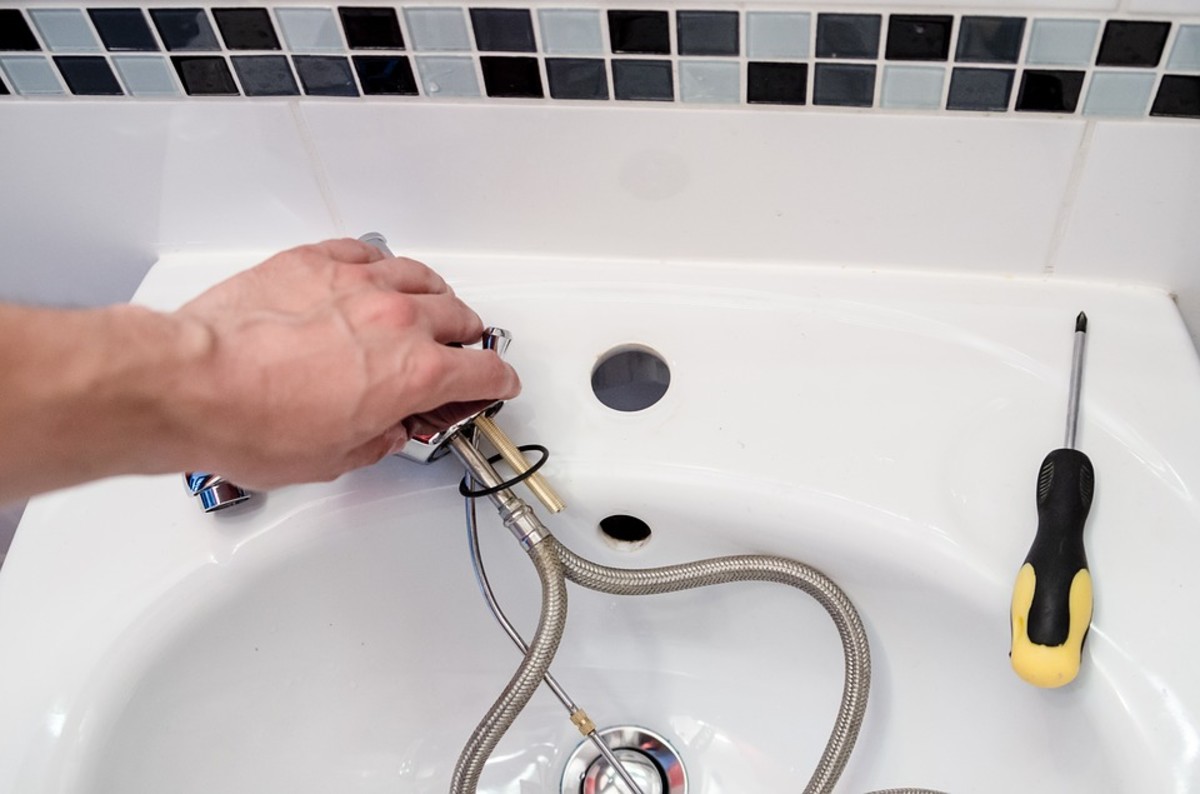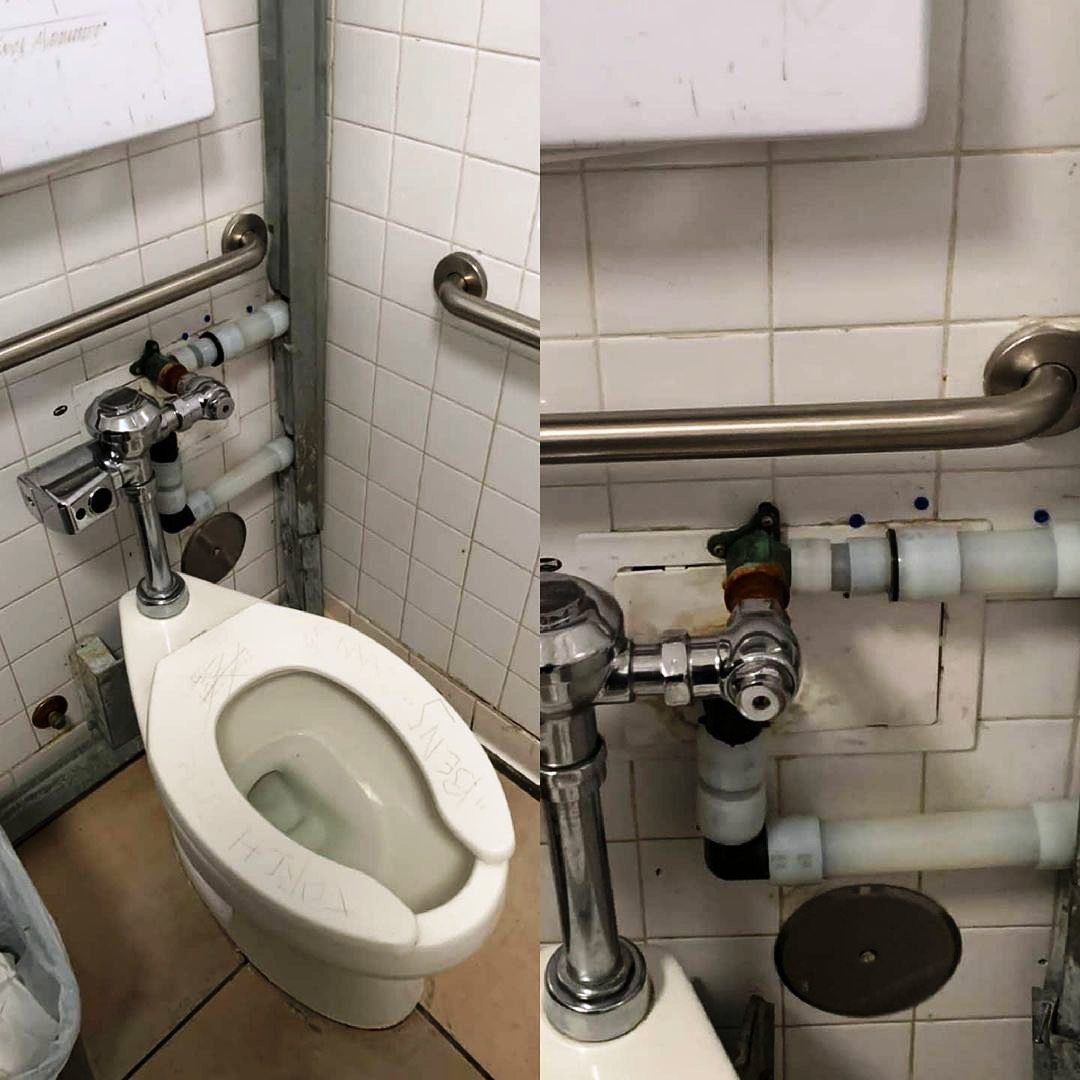Navigating Tricky Home Appliance Troubles: Just How Plumbers Can Save the Day
Navigating Tricky Home Appliance Troubles: Just How Plumbers Can Save the Day
Blog Article
Just about every person is bound to have their own opinion when it comes to How To Fix Noisy Pipes.

To diagnose noisy plumbing, it is essential to identify first whether the unwanted noises happen on the system's inlet side-in various other words, when water is transformed on-or on the drainpipe side. Sounds on the inlet side have actually differed reasons: too much water stress, used shutoff and also tap components, improperly connected pumps or other appliances, incorrectly placed pipe fasteners, and plumbing runs containing too many tight bends or other restrictions. Noises on the drain side usually stem from inadequate area or, similar to some inlet side sound, a design consisting of tight bends.
Hissing
Hissing noise that occurs when a faucet is opened slightly generally signals too much water stress. Consult your neighborhood public utility if you presume this issue; it will be able to tell you the water pressure in your location and also can mount a pressurereducing shutoff on the incoming supply of water pipe if necessary.
Various Other Inlet Side Noises
Squeaking, squealing, scratching, snapping, and also touching normally are triggered by the expansion or contraction of pipelines, normally copper ones supplying hot water. The audios take place as the pipelines slide against loose bolts or strike close-by house framework. You can commonly identify the location of the trouble if the pipelines are subjected; just adhere to the noise when the pipes are making noise. More than likely you will discover a loosened pipeline hanger or a location where pipelines lie so near flooring joists or other mounting items that they clatter against them. Affixing foam pipe insulation around the pipes at the point of call must remedy the trouble. Make sure straps and also hangers are secure as well as offer ample assistance. Where possible, pipeline fasteners need to be connected to massive architectural aspects such as structure wall surfaces instead of to mounting; doing so reduces the transmission of resonances from plumbing to surfaces that can magnify and move them. If attaching bolts to framing is inescapable, wrap pipelines with insulation or other resistant material where they speak to fasteners, and also sandwich the ends of brand-new fasteners in between rubber washers when installing them.
Dealing with plumbing runs that struggle with flow-restricting limited or various bends is a last resort that must be undertaken only after getting in touch with an experienced plumbing service provider. Sadly, this circumstance is rather common in older homes that might not have been constructed with indoor plumbing or that have seen numerous remodels, especially by novices.
Babbling or Screeching
Extreme chattering or shrilling that occurs when a shutoff or tap is turned on, and that normally disappears when the fitting is opened completely, signals loosened or defective interior components. The remedy is to replace the valve or tap with a brand-new one.
Pumps and home appliances such as cleaning equipments and dishwashing machines can move electric motor noise to pipes if they are incorrectly attached. Connect such items to plumbing with plastic or rubber hoses-never inflexible pipe-to isolate them.
Drainpipe Noise
On the drainpipe side of plumbing, the principal goals are to get rid of surface areas that can be struck by falling or rushing water and also to insulate pipes to consist of inescapable sounds.
In brand-new building and construction, bathtubs, shower stalls, bathrooms, and also wallmounted sinks and also basins ought to be set on or versus resistant underlayments to reduce the transmission of noise with them. Water-saving commodes and faucets are less loud than standard models; install them rather than older kinds even if codes in your location still allow using older fixtures.
Drainpipes that do not run up and down to the cellar or that branch right into horizontal pipe runs supported at floor joists or various other mounting existing particularly troublesome noise issues. Such pipelines are huge sufficient to emit considerable vibration; they also bring considerable quantities of water, that makes the scenario even worse. In brand-new building and construction, define cast-iron dirt pipelines (the huge pipelines that drain bathrooms) if you can afford them. Their massiveness contains much of the sound made by water travelling through them. Additionally, stay clear of directing drainpipes in walls shared with bedrooms and also areas where individuals collect. Walls including drains need to be soundproofed as was defined previously, utilizing dual panels of sound-insulating fiber board as well as wallboard. Pipes themselves can be wrapped with special fiberglass insulation made for the purpose; such pipes have an impervious plastic skin (occasionally having lead). Outcomes are not constantly adequate.
Thudding
Thudding sound, typically accompanied by trembling pipes, when a faucet or appliance shutoff is switched off is a problem called water hammer. The noise and vibration are brought on by the resounding wave of stress in the water, which all of a sudden has no place to go. Sometimes opening up a shutoff that releases water rapidly into a section of piping containing a constraint, arm joint, or tee fitting can produce the same problem.
Water hammer can normally be cured by installing installations called air chambers or shock absorbers in the plumbing to which the issue valves or taps are attached. These gadgets allow the shock wave developed by the halted circulation of water to dissipate in the air they have, which (unlike water) is compressible.
Older plumbing systems may have brief vertical areas of capped pipe behind walls on tap runs for the exact same purpose; these can at some point fill with water, lowering or ruining their performance. The remedy is to drain pipes the water supply totally by shutting off the primary water supply shutoff and opening all taps. Then open up the main supply shutoff as well as shut the faucets one by one, beginning with the faucet nearest the shutoff and finishing with the one farthest away.
3 Most Common Reasons for Noisy Water Pipes
Water hammer
When water is running and is then suddenly turned off, the rushing liquid has no place to go and slams against the shut-off valve. The loud, thudding sound that follows is known as a water hammer. Besides being alarming, water hammer can potentially damage joints and connections in the water pipe itself. There are two primary methods of addressing this issue.
Check your air chamber. An air chamber is essentially a vertical pipe located near your faucet, often in the wall cavity that holds the plumbing connected to your sink or tub. The chamber is filled with air that compresses and absorbs the shock of the fast moving water when it suddenly stops. Unfortunately, over time air chambers tend to fill with water and lose their effectiveness. To replenish the air chambers in your house you can do the following. Turn off the water supply to your house at the main supply (or street level). Open your faucets to drain all of the water from your plumbing system. Turn the water back on. The incoming water will flush the air out of the pipes but not out of the vertical air chamber, where the air supply has been restored. Copper pipes
Copper pipes tend to expand as hot water passes through and transfers some of its heat to them. (Copper is both malleable and ductile.) In tight quarters, copper hot-water lines can expand and then noisily rub against your home's hidden structural features — studs, joists, support brackets, etc. — as it contracts.
One possible solution to this problem is to slightly lower the temperature setting on your hot water heater. In all but the most extreme cases, expanding and contracting copper pipes will not spring a leak. Unless you’re remodeling, there's no reason to remove sheetrock and insert foam padding around your copper pipes.
Water pressure that’s too high
If your water pressure is too high, it can also cause noisy water pipes. Worse, high water pressure can damage water-supplied appliances, such as your washing machine and dishwasher.
Most modern homes are equipped with a pressure regulator that's mounted where the water supply enters the house. If your home lacks a regulator, consider having one professionally installed. Finally, remember that most plumbers recommend that water is delivered throughout your home at no lower than 40 and no greater than 80 psi (pounds per square inch).
Whatever the state of your plumbing, one thing is certain — you’re eventually going to encounter repair and replacement issues around your home that require professional help. That’s where American Home Shield can come to your aid.
https://www.ahs.com/home-matters/repair-maintenance/causes-of-noisy-water-pipes/

We were made aware of that editorial on Why Your Water Pipes Are Noisy and How To Shut Them Up from someone on another web address. For those who enjoyed our post kindly make sure you remember to share it. Thank-you for going through it.
This Post Report this page